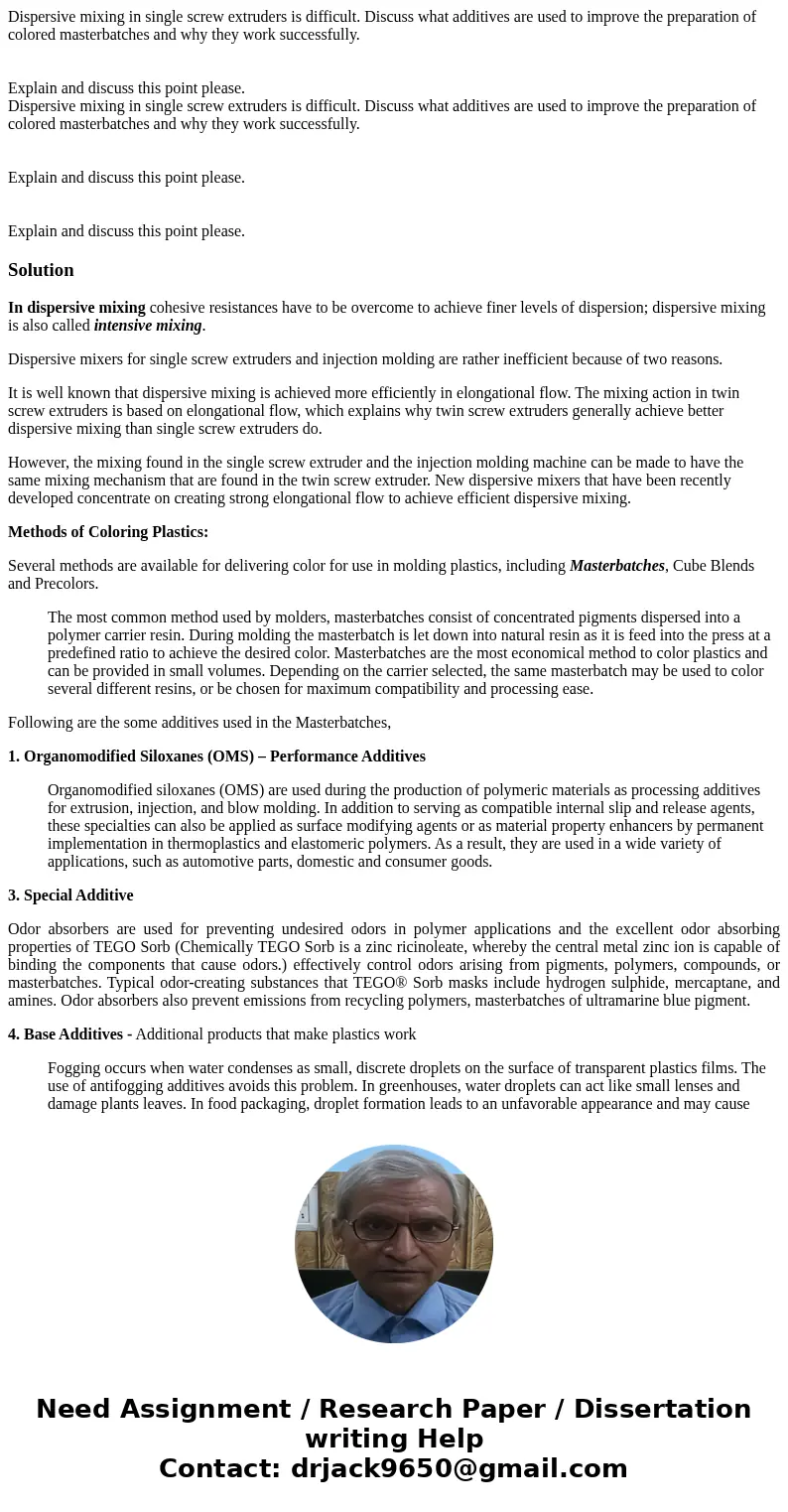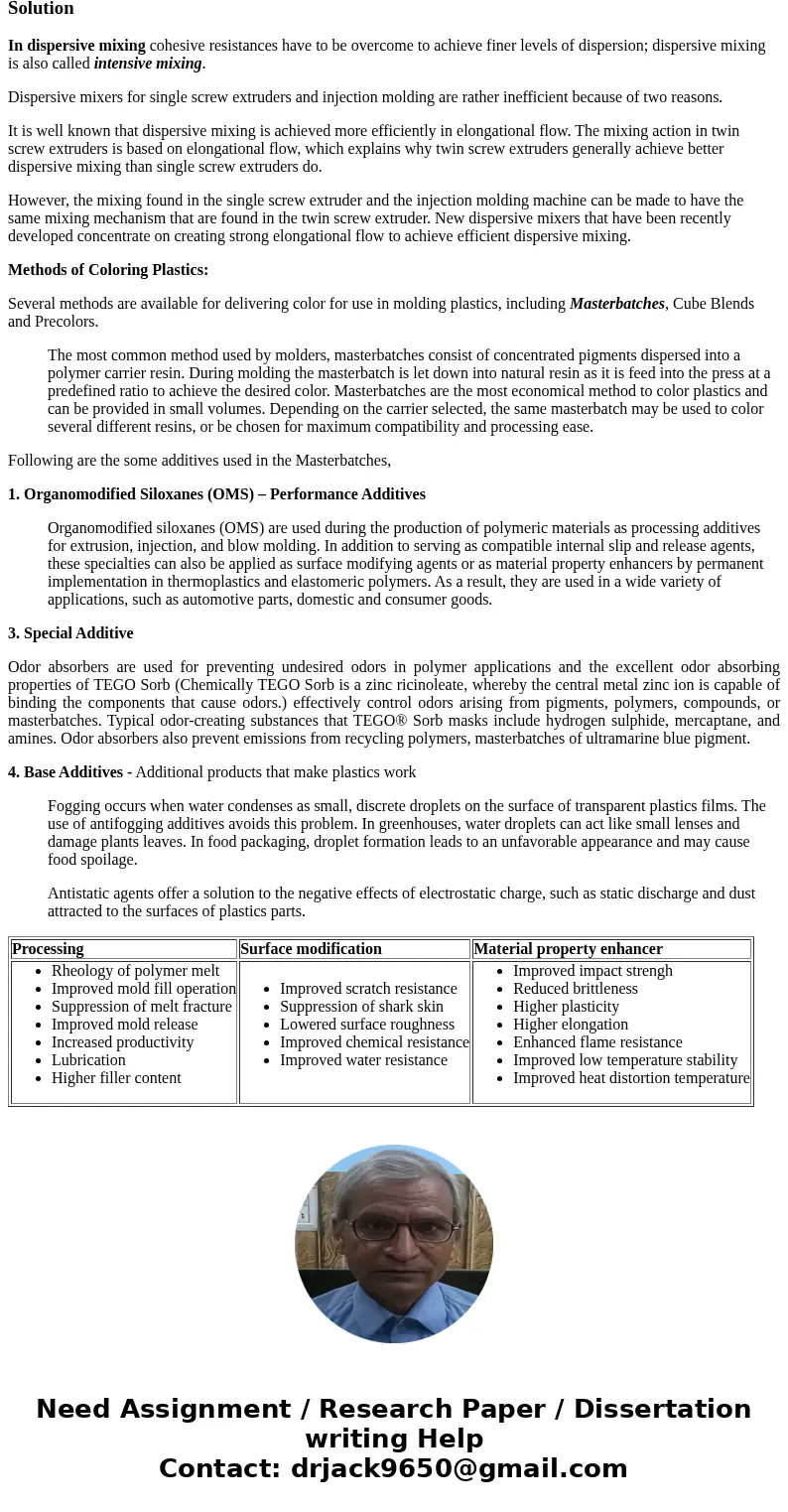Dispersive mixing in single screw extruders is difficult Dis
Solution
In dispersive mixing cohesive resistances have to be overcome to achieve finer levels of dispersion; dispersive mixing is also called intensive mixing.
Dispersive mixers for single screw extruders and injection molding are rather inefficient because of two reasons.
It is well known that dispersive mixing is achieved more efficiently in elongational flow. The mixing action in twin screw extruders is based on elongational flow, which explains why twin screw extruders generally achieve better dispersive mixing than single screw extruders do.
However, the mixing found in the single screw extruder and the injection molding machine can be made to have the same mixing mechanism that are found in the twin screw extruder. New dispersive mixers that have been recently developed concentrate on creating strong elongational flow to achieve efficient dispersive mixing.
Methods of Coloring Plastics:
Several methods are available for delivering color for use in molding plastics, including Masterbatches, Cube Blends and Precolors.
The most common method used by molders, masterbatches consist of concentrated pigments dispersed into a polymer carrier resin. During molding the masterbatch is let down into natural resin as it is feed into the press at a predefined ratio to achieve the desired color. Masterbatches are the most economical method to color plastics and can be provided in small volumes. Depending on the carrier selected, the same masterbatch may be used to color several different resins, or be chosen for maximum compatibility and processing ease.
Following are the some additives used in the Masterbatches,
1. Organomodified Siloxanes (OMS) – Performance Additives
Organomodified siloxanes (OMS) are used during the production of polymeric materials as processing additives for extrusion, injection, and blow molding. In addition to serving as compatible internal slip and release agents, these specialties can also be applied as surface modifying agents or as material property enhancers by permanent implementation in thermoplastics and elastomeric polymers. As a result, they are used in a wide variety of applications, such as automotive parts, domestic and consumer goods.
3. Special Additive
Odor absorbers are used for preventing undesired odors in polymer applications and the excellent odor absorbing properties of TEGO Sorb (Chemically TEGO Sorb is a zinc ricinoleate, whereby the central metal zinc ion is capable of binding the components that cause odors.) effectively control odors arising from pigments, polymers, compounds, or masterbatches. Typical odor-creating substances that TEGO® Sorb masks include hydrogen sulphide, mercaptane, and amines. Odor absorbers also prevent emissions from recycling polymers, masterbatches of ultramarine blue pigment.
4. Base Additives - Additional products that make plastics work
Fogging occurs when water condenses as small, discrete droplets on the surface of transparent plastics films. The use of antifogging additives avoids this problem. In greenhouses, water droplets can act like small lenses and damage plants leaves. In food packaging, droplet formation leads to an unfavorable appearance and may cause food spoilage.
Antistatic agents offer a solution to the negative effects of electrostatic charge, such as static discharge and dust attracted to the surfaces of plastics parts.
| Processing | Surface modification | Material property enhancer |
|
|
|


 Homework Sourse
Homework Sourse